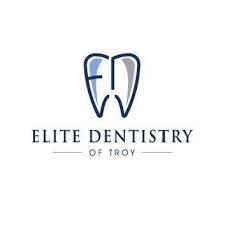Dr. McGlennen: Tell me how you use OralDNA® salivary diagnostics.
Brooke RDH: I use OralDNA® salivary diagnostics to test new patients, patients that have clinical signs of periodontal disease, or patients with a complex medical history.
Dr. McGlennen: What are the biggest benefits to using salivary diagnostics?
Brooke RDH: The benefits of salivary diagnostics are being able to quantify periodontal disease, having something to physically show the patient about their periodontal disease and knowing exactly what pathogenic bacteria we are dealing with when trying to treat the patient. It is hard to imagine practicing without these results now that I know of the benefits.
Dr. McGlennen: What is your favorite part of the MyPerioPath® results? Why?
Brooke RDH: I love the layout of the test results. I use the pathogenic threshold for patients to see how much infection they may have. I also like how the results show the patient the systemic link for each bacterium, so the patient knows this isn’t just affecting their oral health.
Dr. McGlennen: How do your patients respond to this technology? What is their #1 question?
Brooke RDH: Most of my patients love this technology, especially when we can do a 10-week post-test to see how well their periodontal therapy has worked. Usually their first question about the test is how much does it cost and does insurance cover it, and while it can be costly for some patients without the insurance coverage, most see the value in it and how important it is for the success of our treatment.
Dr. McGlennen: What is your biggest challenge? How do you overcome that obstacle?
Brooke RDH: I think the biggest challenge is getting people to see the value in testing. Price for anything can be an obstacle, but once we fully explain the benefits of investing in their health now and the best long-term success with their therapy, that price obstacle tends to vanish. Patients want this higher quality of care.
Dr. McGlennen: If a new OralDNA® provider were to ask you for advice, what would be your best tip?
Brooke RDH: The best advice I would give to a new OralDNA® provider would be to understand the “why” behind salivary diagnostics. Knowing how much this can help your patients with the success of their therapy and using it not only as a diagnostic tool but also an educational tool will make it easier to help your patients see the value in it and want to invest in their health. It is so exciting to have a patient come in for their first periodontal maintenance appointment and go over their 10-week post-test with results showing how much they have decreased their bacteria!
Dr. McGlennen: Where do you see salivary diagnostics in 3-5 years? 10 years? What would be the impact on your practice/patients?
Brooke RDH: In 3-5 years I hope to see salivary diagnostics become a standard of care in the dental practice, testing all new patients, periodontal patients at 3-4-month maintenances, and regular recall patients at least yearly. In 10 years, I hope the dental and medical professions come together to have a whole-body health approach to serving public health, with a more comprehensive understanding of the oral/systemic connection-and using salivary diagnostics will be a key tool in this collaboration!
For more information on how to become an OralDNA Provider – scan HERE: 
- Throwback: Interview with Brooke Armour, RDH - January 24, 2025
- Interview with Brooke Armour, RDH - March 20, 2020

